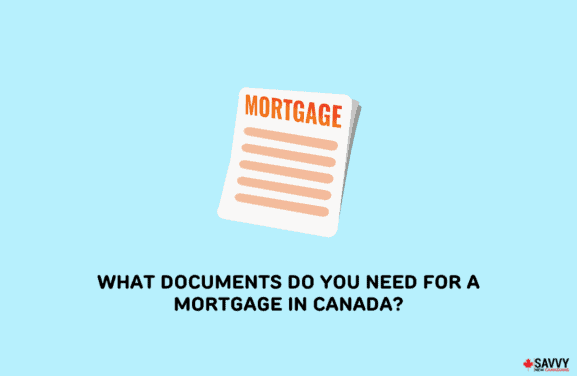Are you considering refinancing a mortgage in Canada? If you already have a mortgage, refinancing provides a way to reduce your borrowing costs or access funds.
But what exactly is refinancing, and what does it involve?
In this guide, we look at everything you need to know about mortgage refinancing in Canada so you can decide whether it is a good option in your situation.
Key Takeaways
- Refinancing your mortgage allows you to lower your mortgage interest rate or borrow from your home equity.
- You can borrow up to 80% of the value of your home.
- Refinancing involves costs, and you should examine the pros and cons to determine whether it is the right decision for you.
What is a Mortgage Refinance?
When you get a mortgage, you have a mortgage contract. Refinancing is where you break that contract and take out another mortgage that pays off the remaining balance in full.
You now have a new loan with different terms and conditions, which could include a lower interest rate.
But that’s not all. You might be able to increase your mortgage when you refinance and get access to a lump-sum payment. This is called a cash-out refinance.
You can access your property’s equity and use this to pay for renovations, set up a business, or anything else you want.
When Can You Refinance Your Mortgage in Canada?
You can refinance your mortgage anytime in Canada, but most people tend to refinance toward the end of their mortgage terms.
You can refinance mid-term if you want to, but you must consider the pros and cons because sometimes the costs outweigh the benefits.
Consider your current mortgage rate and compare it to the rate you could get if you change and how much you could save.
You should always consider the costs involved. For example, refinancing your mortgage involves costs like appraisal, title search, and prepayment penalty costs. You have to decide whether refinancing is worth it in your situation.
How to Refinance Your Mortgage
If you’ve decided to refinance your mortgage, look at other mortgages to find out what is available.
Look at the different rates and do some calculations to work out how much you can save on your mortgage payments.
Find out about the costs involved in switching to determine whether it is worth it in your situation.
Approach lenders individually and find out about the documentation you must present. Every lender is slightly different, and you may be able to find most of this information on their websites.
Next, get pre-approved. This does not mean you have any obligation to go ahead with the mortgage. Read the terms carefully and know what you’re getting into.
If you decide to refinance and everything is in place, close your loan. The new lender will pay off the balance of your mortgage and set up a new contract, and you will now start repaying the new lender.
How Much Can You Borrow for a Home Refinance?
A new mortgage lender needs to know the value of your home, and they will use this to determine the amount you can borrow.
The maximum amount you can borrow is 80% of the appraised value of your property.
Let’s say your home is worth $400,000. In this case, you could borrow up to 80% of this, which is $320,000.
If your previous mortgage balance was $250,000, you could receive an extra $70,000 as a lump sum as long as you have 20% equity in the property.
Pros and Cons of Refinancing Your Mortgage
Keep these pros and cons in mind before deciding on refinancing your mortgage in Canada:
Pros
- You can save money when you refinance by switching to a mortgage with a lower interest rate.
- Unlock equity and get a lump-sum payment to spend on anything you want.
- Some lenders have special offers like sign-up bonuses that you can use when refinancing your mortgage.
Cons
- If you increase the amount you borrow, it could take longer to pay off your mortgage.
- The additional costs involved in refinancing may not make up for the savings you could make on your mortgage payments.
- You can only get a cash-out refinance if you have at least 20% equity in your home.
Featured Mortgage Offer
Neo Mortgage

On Neo Financial’s website
- Compare mortgage rates across several lenders
- Access to competitive rates and online applications.
- Available Canada-wide
- Accepts a wide range of credit scores
Mortgage Refinance Rates in Canada
Mortgage refinance rates are no different from mortgage rates. The fact that you are refinancing your mortgage has no bearing on rates because you are essentially just getting a new mortgage.
Start by looking at the mortgage rates to see what the average is. Find rates from large banks and digital lenders, which are often cheaper.
At the time of writing, Scotiabank’s 5-year fixed-rate mortgage has an interest rate of 6.34%, while the same mortgage at RBC is lower at 6.29%.
The same mortgage at Neo Mortgages is 4.29%, while Nesto has an interest rate of 4.39%.
Rates change all the time, and they are based on a few factors, including:
- The type of mortgage (fixed, variable, open, and closed).
- The length of the term.
- The Bank of Canada overnight rate (affects variable-rate mortgages).
- The bond market (affects fixed-rate mortgages).
Should I Refinance My Mortgage in Canada?
This is entirely up to you and your situation, but it’s worth looking at some of the reasons why you might want to refinance your mortgage and why you might not want to.
The main reason why many people refinance their mortgages is to get a better mortgage rate.
Rates may have gone down over the years since you took out your mortgage. You may realize that you can save a lot of money on your mortgage payments by getting a new mortgage at a lower rate.
This could take some pressure off your finances and free up money to spend on other things. You can use a mortgage refinance calculator to get a better idea of how much you could save.
The other primary reason to refinance your mortgage is to get a lump-sum payment you can spend on anything you want.
Let’s say you want to renovate your property to increase its value. You could get a lump sum when you refinance your mortgage and put this towards renovations. One major benefit is that it will typically be cheaper than getting a different kind of loan.
But you may not want to refinance, and there are some good reasons why it may not be the right move.
Refinancing costs can be high, and closing your mortgage may lead to fees that are not worth it.
The interest rate may be higher or the same, meaning sticking with your existing mortgage may be better.
You may not want the hassle of going through the process again, applying for another mortgage and doing the paperwork.
There may also be better alternatives. For example, with a home-equity line of credit (HELOC), you can borrow against your home’s equity if your primary reason for refinancing is to get a lump sum.
You must hold 20% equity in your property or more, and you can only borrow up to 65% of your home’s value rather than 80%. However, that may be enough. This way, you can keep your mortgage and avoid repayment penalties.
FAQs
It depends on your situation. It may be worth refinancing if you can get a lower interest rate or a lump sum payment.
The general rule is to have 20% equity or more in your home for a cash-out refinance. You should also consider the pros and cons carefully because refinancing is not always the best option.
If interest rates are currently higher than the rate you are paying on your mortgage, you may not want to refinance. Also, if the costs of refinancing outweigh the benefits, it may be worth sticking with your mortgage.
This depends on the costs involved in refinancing in your specific situation. You may be able to get a second mortgage and avoid prepayment penalties, but overall you will need to calculate the costs in your situation.
Most lenders will need you to have 20% equity or more in your home for a cash-out refinance. You can also borrow up to 80% of the appraised value of your property when you refinance your mortgage in Canada.



